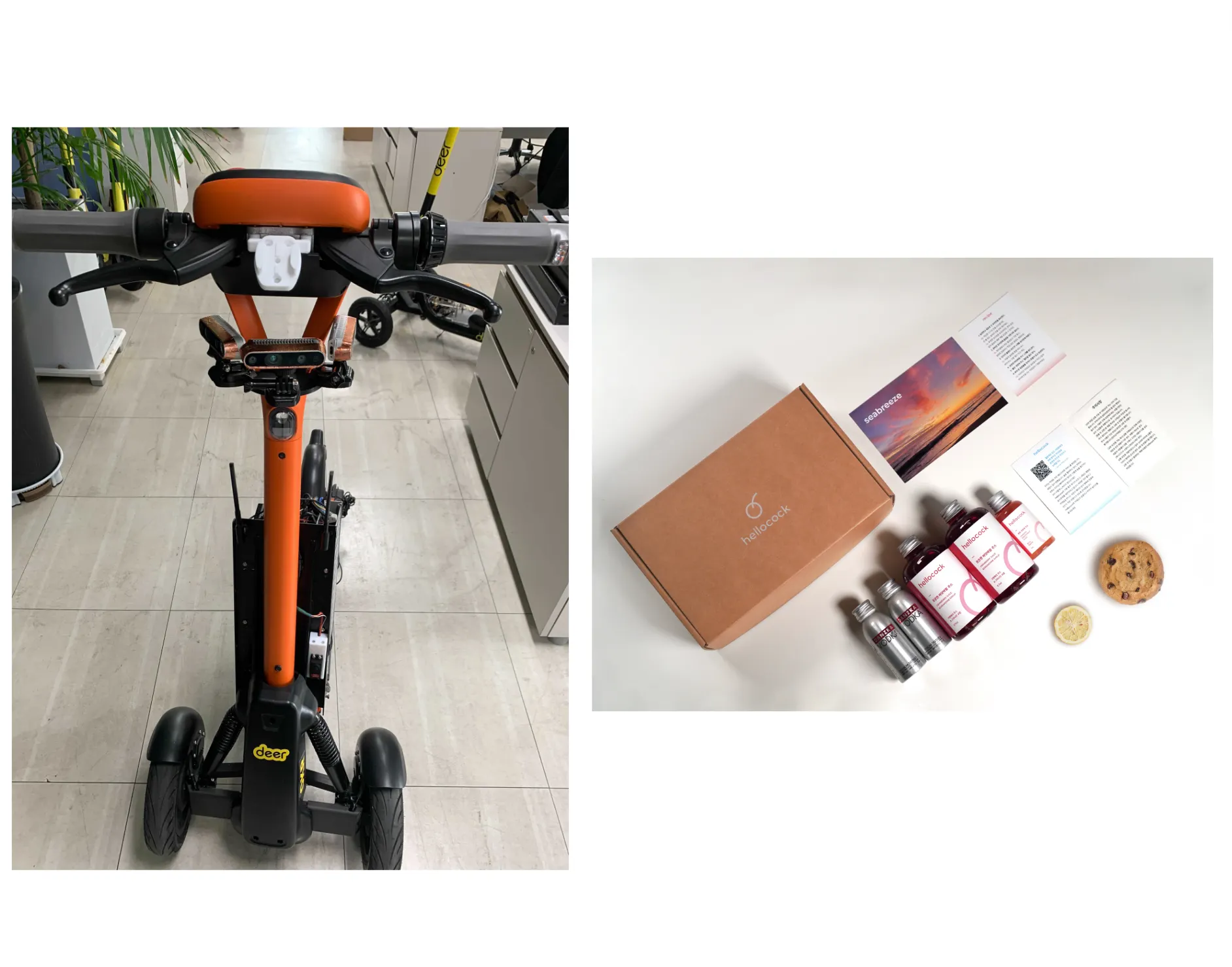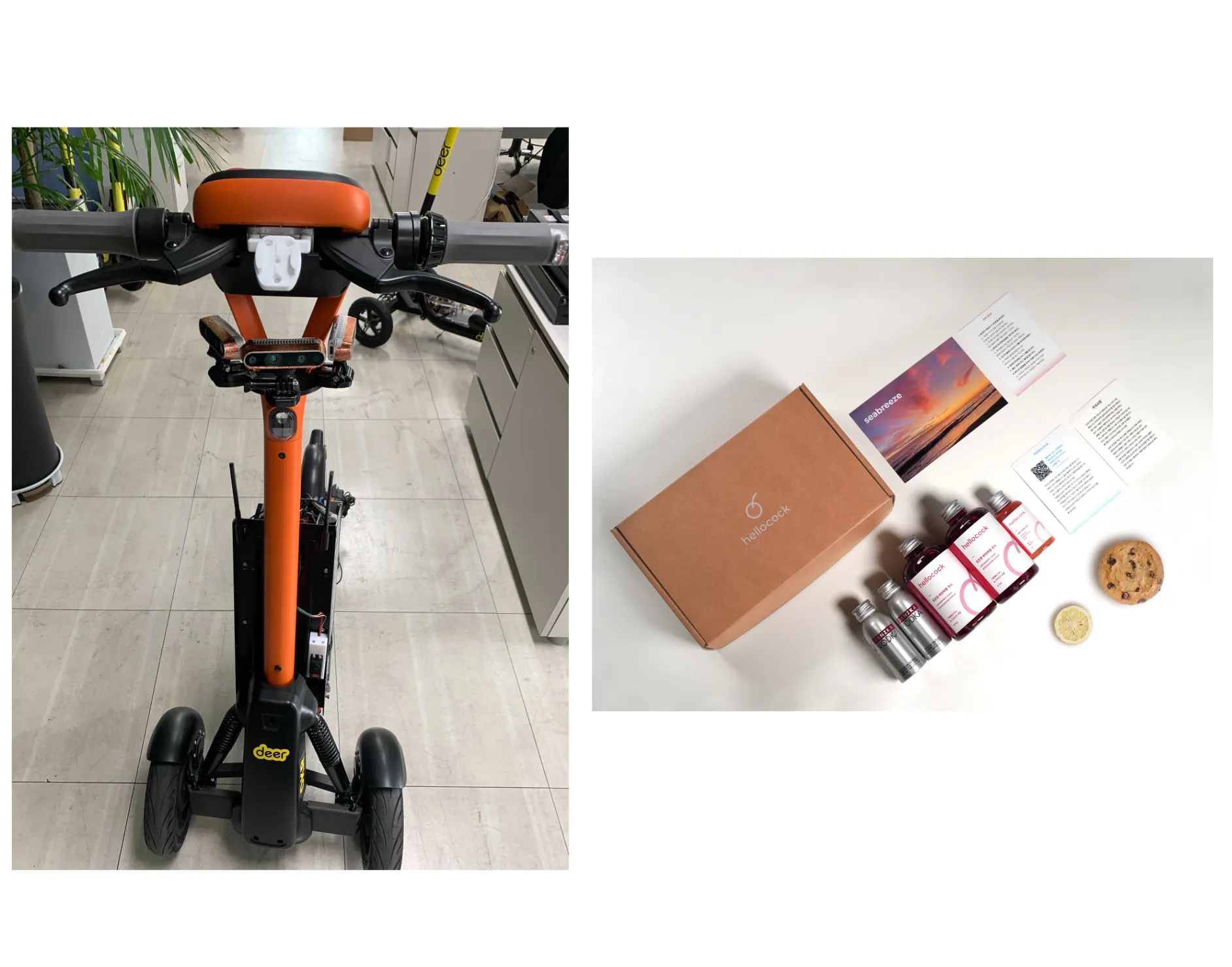The original purpose of this article was 10 minutes presentation script for the English class in  교환학생 / EPITA PARIS Computer Science, Semester4.
교환학생 / EPITA PARIS Computer Science, Semester4.
Intro
•
Today, I want to share two stories in my 25 years of life.
•
Please take a look at these images
•
They represent not only two stories but also two significant mistakes.
•
I believe these stories contain valuable lesson, especially for those who are interested in problem-solving or who want to be creative developers.
•
Today’s topic could be expressed in the single phrase.
•
To the man who only has a hammer, everything he encounters begins to look like a nail.
Story 1
•
When I was 22 years old, I worked as an AI and robotics engineer for a company that operated 10,000 sharing kickscooters all around the country.
•
There were two main problems with the kick scooter sharing service:
◦
First, people often threw the scooters in strange places after using them.
▪
Sometimes they parked the kickscooter in the middle of an apartment complex or in the center of a pedestrian pathway.
◦
Second, there was a demand and supply imbalance.
▪
For example, as you know, the bicycle sharing service in Paris, known as Velib, has encountered issues with balancing.
▪
Specifically, the station located near the Villgif campus is usually empty, while the stations located in the center of Paris are usually overcrowded.
◦
To solve these problems, my team tried to develop autonomous driving system for kickscooters.
◦
If we adopt a technology like autonomous driving in the service, we thought we can transfer kickscooters from random locations to designated areas where parking is allowed.
•
However, my hard work to develop an autonomous driving kick scooter to solve the problem / turned out to be a mistake. Can you guess why it was a mistake?
◦
It was a mistake / because it was unnecessary to develop an autonomous driving system to solve the problem.
◦
It would have been much easier / to develop a remote control system which can solve the same problem instead of developing autonomous driving system
◦
Unfortunately, we realized this after we had already spent more than a year and more than one million euros on development.
•
I was interested in artificial intelligence, and all of my team members were fascinated with self-driving technology. We were all passionate about our jobs.
•
If you were working as an AI engineer, and if you liked your job, it would be easy to set a goal of developing AI projects instead of developing remote control system projects.
•
It would be hard to change the goal from developing AI to something else, even if that goal related to AI turned out / not to be efficient in providing value to other people.
•
This was the story of my first mistake.
Story 2
•
The second story of mistakes is related to product development.
•
When I was 23 years old, I founded a startup that sold cocktail kits for people to make their own drinks. Each cocktail kit contained juices, spirits, tools, and a recipe for making a cocktail. It took us two months to develop the minimum viable product of the cocktail kit.
•
One day, we decided to sell the product to the public.
•
there is a big riverside park in Seoul where would be the perfect place to test the product with the target audience.
•
We took 50 boxes of the cocktail kit to the riverside park / and tried to sell our product to people sitting in the park. However, nobody was interested in our product, and we didn't sell anything that day.
•
Tomorrow night, we tried to understand why nobody was interested in our product.
•
One co-founder, who was interested in product design, insisted that the main problem was the poor quality of the packaging.
◦
Therefore, we set a goal to make our product fancier and spent 3 months upgrading the product.
◦
After that, we went to the riverside park again, but the result was the same. Nobody was interested in our product.
•
Another co-founder, who was interested in finance, insisted that the main problem was the expensive price of the product.
◦
Therefore, we set a goal to make the price more reasonable.
◦
We studied about pricing system. We changed the price and went to the riverside park again, but the result was still the same.
•
After these experiences, we realized that / whether we acheive a goal or not is not a big deal.
•
We had spent months discussing what the problem was, why it could be a problem, and what the proper goal should be.
•
We noticed that we had only exposed our product to fewer than 100 people when we tried to sell the products at the riverside park.
•
It was too small a number to test something to the public.
•
So, we redefined the problem of the public test failure as / "the lack of marketing exposure"
•
We also changed our goal to "reaching 1 million people who are potential customers for our cocktail kits".
•
We worked hard to achieve this goal.
•
Finally, we saw a change in the results. Our team was able to earn 5,000 euros in just one month after we set the new proper goal.
•
It took us more than a year to see any positive results, but it took less than a month to achieve positive results once we set a proper goal.
•
This was the story of my second mistake.
Conclusion
•
The lesson we can learn from both stories is summed up in a single keyword: Design Thinking.
◦
Design thinking is a famous framework which was proposed by Stanford University.
◦
This framework suggests a standard problem-solving process, which can be divided into two parts: The first part focuses on defining the problem and setting a goal, and the second part focuses on achieving the goal and solving the problem.
◦
Because we are studying engineering, we mainly focused on solving and implementing something based on a goal, which is the second part of design thinking.
◦
However, design thinking says that: proper problem definition and proper goal definition is important than simply solving a problem or achiving a goal, especially for engineers who want to create their own startups or valuable products.
◦
This is exactly the lesson that can be learned from my story.
•
Do you still remember the phrase which I mentioned before I spoke?
•
To the man who only has a hammer, everything he encounters begins to look like a nail.
•
Do not waste your time solving a problem based on your preferences or specialties.
•
Do not waste your time solving a problem that is useless and has no impact, even if you solve it.
•
If you set a well-defined goal and solve it, you can create a product that is very useful for the people to whom you want to give some value.
•
Remember Design Thinking, which strongly emphasizes / the importance of setting aside personal preferences / when defining a problem or establishing a goal.
•
Thank you all very much.
글을 쓰는 데 참고한 자료입니다.
글을 쓰는 데 반영된 생각들입니다.
이 글은 다음 글로 이어집니다.
1.
작성 중입니다.


